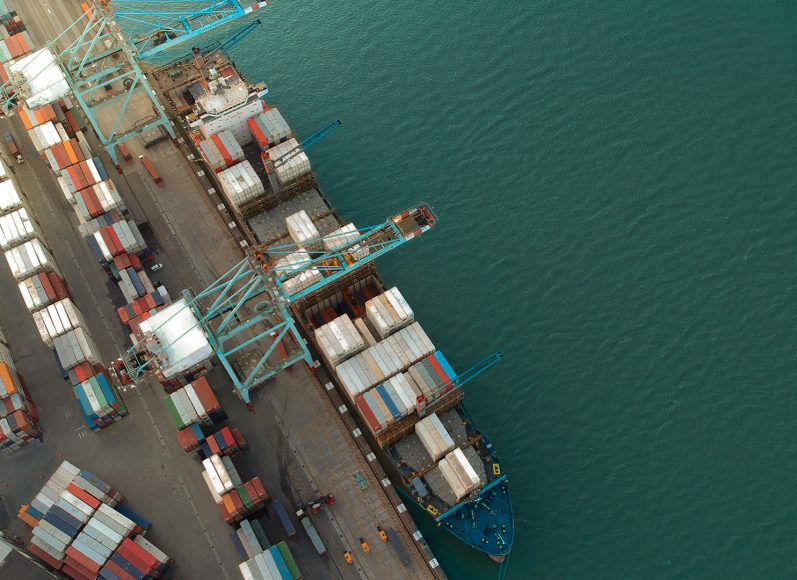CIF vs. FOB
The Ultimate Guide to Mastering Shipping Costs and Responsibilities
1. What is FOB and Why Does It Matter?
In the world of shipping and logistics, FOB (Free On Board) is a term that plays a crucial role in defining the responsibilities of buyers and sellers. Whether you’re a small business owner managing shipments or a freelancer invoicing for goods sold, understanding FOB shipping terms is essential for smooth operations. But what does FOB really mean, and why should it matter to you?
At its core, FOB determines who takes responsibility for shipping costs and risks at different stages of a product’s journey. It answers key questions like: *Who pays for the freight? Who is liable for damages during transit?* The answers to these questions not only affect your bottom line but also your relationship with clients and suppliers. Misunderstanding FOB terms could lead to disputes or unexpected costs that disrupt your cash flow and operations.
This guide will demystify FOB meaning and explain its application on invoices. We’ll break down the different types of FOB terms – like FOB Origin and FOB Destination – and explore how they impact shipping agreements and small business accounting.
By the end of this article, you’ll have a clear understanding of FOB on invoices and the confidence to handle your shipping transactions like a pro. Ready to decode FOB? Let’s dive in!
2. What’s the Difference Between FOB Shipping Point and FOB Destination?
In the world of shipping and logistics, two commonly used terms – FOB Shipping Point and FOB Destination – determine who is responsible for shipping costs and risks during transit. These terms are crucial for businesses managing shipments, as they directly impact financial and legal responsibilities. Let’s break down the differences between these terms and how they affect shipping agreements.
FOB Shipping Point
With FOB Shipping Point, the buyer takes ownership of the goods as soon as they leave the seller’s location. This means that once the products are loaded onto the delivery vehicle, the buyer assumes all responsibility for:
- Shipping costs: The buyer pays for transporting the goods.
- Risks during transit: If the goods are damaged or lost en route, the buyer bears the loss.
This arrangement often benefits sellers, as their liability ends when the goods are handed over to the shipping carrier.
Example:
A small business orders industrial equipment from a supplier in another state. The supplier ships the equipment from their warehouse under FOB Shipping Point terms. Once the equipment leaves the supplier’s premises, the buyer takes responsibility for paying freight costs and managing potential damages during shipping.
This term is commonly used when buyers want more control over the shipping process, such as choosing their preferred carriers or negotiating better freight rates.
FOB Destination
In contrast, FOB Destination means the seller retains ownership and responsibility for the goods until they reach the buyer’s location. In this case:
- Shipping costs: The seller pays for transporting the goods.
- Risks during transit: The seller is liable for any loss or damage to the goods while in transit.
This arrangement favors buyers, as they only assume responsibility for the goods upon delivery to their specified location.
Example:
A business orders raw materials from a supplier under FOB Destination terms. The supplier pays for the shipping and takes responsibility for ensuring the materials are delivered safely. If any damage occurs during transit, the supplier must resolve the issue or provide replacements.
This term is ideal for buyers who want to avoid the complexities of managing shipping logistics and risks.
Key Differences: FOB Shipping Point vs. FOB Destination
| Aspect | FOB Shipping Point* | FOB Destination |
| Ownership Transfer | At the seller’s location when goods are shipped. | At the buyer’s location upon delivery. |
| Shipping Costs | Paid by the buyer. | Paid by the seller. |
| Risk Responsibility | Buyer assumes risks during transit. | Seller assumes risks until delivery. |
| Liability for Damage | Buyer bears the cost if goods are damaged en route. | Seller is responsible for damages in transit. |
When to Use Each Term
- FOB Shipping Point is commonly used when buyers want more control over shipping and are willing to take on the associated risks and costs. This term is also favored for long-distance shipments where buyers prefer to manage their freight arrangements.
- FOB Destination is better suited for buyers who want peace of mind, as it ensures the seller handles all shipping logistics and risks until delivery. This is often used for high-value or fragile goods that require careful handling.
Understanding the difference between FOB shipping terms is essential for managing shipments efficiently and avoiding disputes. By clearly specifying whether FOB Shipping Point or FOB Destination applies to your transactions, you can ensure a smooth process and build stronger relationships with your suppliers or clients.
3. Why Is FOB Important to Small Business Accounting?
For small business owners, understanding FOB (Free On Board) terms isn’t just about shipping—it’s a critical component of accurate accounting and efficient operations. FOB terms define when ownership of goods transfers between buyer and seller, directly impacting how shipping costs, inventory, and financial transactions are recorded. Misinterpreting these terms can lead to errors in financial reporting, inventory management, and cash flow planning, which can harm a business’s bottom line.
Accurate Financial Reporting
FOB terms determine when shipping costs and inventory expenses are recorded in your books.
- FOB Shipping Point: If the buyer takes ownership of the goods once they leave the seller’s location, they must record the inventory and shipping costs at that point. This ensures that expenses are recognized in the correct period.
- FOB Destination: If the seller retains ownership until delivery, the buyer only records the transaction after receiving the goods.
Failing to follow the correct FOB terms can result in inaccurate financial reports, making it difficult to assess the company’s true financial position.
Cash Flow Management
Small businesses thrive on effective cash flow management. FOB terms clarify who bears the shipping costs, allowing you to plan for expenses accordingly.
- FOB Shipping Point: The buyer is responsible for paying freight charges upfront, which impacts their immediate cash flow.
- FOB Destination: The seller covers shipping costs, allowing the buyer to conserve cash until the goods arrive.
By understanding FOB shipping costs in accounting, small businesses can avoid surprises that strain their budget or disrupt financial plans.
Inventory Management
FOB terms also dictate when goods are recorded in a business’s inventory. This is crucial for small businesses that rely on accurate inventory data to manage stock levels and prepare financial statements.
- FOB Shipping Point: Inventory is recognized as soon as the goods are shipped, regardless of whether they’ve been delivered.
- FOB Destination: Inventory is recorded only when the goods reach the buyer’s location.
Mismanaging these terms can lead to inventory errors. For example, recording goods too early under FOB Destination could inflate your stock, while delaying recognition under FOB Shipping Point could cause a mismatch in financial records.
Potential Challenges Without FOB Knowledge
Consider this scenario: A small bakery orders packaging materials from a supplier under FOB Shipping Point terms. The owner mistakenly assumes they are responsible only upon delivery (FOB Destination). Because of this misunderstanding, they:
1. Fail to account for the shipping costs in their expenses.
2. Delay recording the materials in their inventory, leaving them unprepared for an upcoming audit.
The result? Discrepancies in their financial reports, missed tax deductions for shipping expenses, and confusion over inventory availability.
Now imagine the same bakery correctly applying FOB terms. They record the shipping costs and materials upon dispatch, enabling accurate reporting and proactive planning for future orders.
The Bottom Line: Why FOB Matters
Understanding and applying FOB accounting terms ensures:
- Accurate financial reporting: Properly assign shipping costs and inventory at the right time.
- Improved cash flow planning: Know who bears shipping costs to avoid surprises.
- Effective inventory management: Record goods when ownership transfers, keeping your records in sync.
By mastering FOB and inventory management, small business owners can avoid costly mistakes, make informed financial decisions, and maintain trust with clients and suppliers. Whether you’re dealing with FOB Shipping Point or FOB Destination, clear terms mean fewer headaches and better business outcomes.
4. What Is the Difference Between CIF and FOB?
When it comes to international shipping, understanding the terms CIF (Cost, Insurance, and Freight) and FOB (Free On Board) is essential. These terms define who is responsible for the costs, risks, and ownership of goods during transit. While they serve similar purposes, they differ significantly in their structure and responsibilities. Let’s break down the key differences to help you choose the right term for your business.
What Is CIF?
CIF stands for Cost, Insurance, and Freight. Under CIF terms, the seller takes responsibility for:
1. Cost of goods: The price of the items being shipped.
2. Insurance: Coverage for the goods during transit.
3. Freight charges: The cost of transporting the goods to the buyer’s location.
This means the seller bears most of the financial and logistical burden until the goods arrive at the buyer’s designated port or destination. The buyer, however, takes over responsibility once the goods are delivered.
CIF Example:
Imagine a retail business in the United States orders furniture from a supplier in China under CIF terms. The supplier:
- Covers the cost of shipping the furniture to the U.S.
- Provides insurance for the goods while in transit.
- Assumes all risks until the goods are delivered to the port or buyer’s warehouse.
For the buyer, this arrangement provides convenience but often comes at a higher price, as the seller factors these added responsibilities into the total cost.
What Is FOB?
- FOB stands for Free On Board and shifts responsibility at different points depending on the type:
- FOB Shipping Point: The buyer takes ownership and assumes responsibility for shipping costs and risks as soon as the goods leave the seller’s premises.
- FOB Destination: The seller retains responsibility until the goods reach the buyer’s location.
Unlike CIF, FOB terms don’t include insurance as part of the agreement, leaving it up to the buyer or seller to arrange as needed.
FOB Example:
Consider the same retail business ordering furniture, but this time under FOB Destination terms. The supplier:
- Covers the shipping cost to the buyer’s warehouse.
- Retains responsibility for the goods until delivery.
If the agreement had been FOB Shipping Point, the buyer would have taken on shipping costs and risks as soon as the furniture left the supplier’s warehouse.
CIF vs FOB: Key Differences
| Aspect | CIF (Cost, Insurance, and Freight) | FOB (Free On Board) |
| Responsibility | Seller covers cost, insurance, and freight until the destination. | Responsibility shifts based on FOB terms (Shipping Point or Destination). |
| Insurance | Seller provides insurance coverage during transit. | Insurance is optional and not included. |
| Ownership Transfer | At the buyer’s port or delivery location. | Varies: at the seller’s location (Shipping Point) or buyer’s (Destination). |
| Cost Impact | Higher cost due to added seller responsibilities. | Lower cost, but buyer might bear additional expenses (e.g., insurance). |
| Risk Management | Seller assumes transit risks until delivery. | Depends on the FOB type; risk can shift to the buyer earlier. |
How These Terms Affect Pricing and Responsibility
1. Pricing Structure:
CIF generally comes with a higher upfront cost since the seller includes shipping and insurance in the price. FOB tends to have a lower cost, but the buyer may need to handle additional expenses like freight charges and insurance.
2. Responsibility Split:
CIF provides more convenience for the buyer, as the seller manages shipping and insurance. FOB gives buyers more control over logistics, which can lead to cost savings if they negotiate favorable shipping rates.
Which Is Right for Your Business?
- Choose CIF if you prefer convenience and want the seller to handle shipping and insurance. It’s particularly useful for first-time importers or complex international shipments.
- Choose FOB if you want greater control over logistics, have established relationships with shipping providers, or need a more cost-effective solution.
By understanding the differences between CIF vs FOB, you can make smarter decisions about shipping terms that align with your financial and operational goals. Whether prioritizing convenience or cost savings, selecting the right term is a critical step in smooth and profitable transactions.
5. Key Takeaways
- FOB (Free On Board) terms specify who is responsible for shipping costs and risks during transit.
- FOB Shipping Point means the buyer assumes responsibility as soon as the goods leave the seller’s location.
- FOB Destination means the seller retains responsibility for shipping costs and risks until the goods reach the buyer’s location.
- CIF (Cost, Insurance, and Freight) differs from FOB by including the cost, shipping, and insurance in the price, with the seller handling all logistics until delivery.
Understanding the differences between FOB and CIF is crucial for small businesses as these terms impact invoicing, accounting, and inventory management. Correctly applying FOB terms ensures that financial records reflect the right shipping costs and risks, leading to accurate invoicing and proper inventory management. Whether you are the buyer or the seller, choosing the right shipping term is essential for seamless operations and preventing potential disputes over responsibilities.
6. Frequently Asked Questions (FAQs)
1. Do I need to include FOB terms on invoices?
Yes, including FOB terms on your invoices is important. It helps clarify which party is responsible for shipping costs and risks during transit. Including the specific FOB term (Shipping Point or Destination) on your invoice ensures that both the buyer and seller are clear about who is accountable for costs, shipping, and potential damages, which can prevent misunderstandings.
2. Can I negotiate FOB terms with my supplier?
Absolutely! FOB terms are negotiable, and you can discuss with your supplier to determine the most beneficial arrangement for both parties. Whether you prefer to cover shipping costs or want the seller to handle them, the flexibility of FOB terms allows you to find an agreement that suits your business needs. Be sure to clarify these terms in your contract to avoid confusion.
3. What if the goods are damaged during shipping under FOB Shipping Point?
Under FOB Shipping Point, the buyer assumes responsibility for the goods once they leave the seller’s premises. If the goods are damaged during transit, the buyer must file an insurance claim with the shipping carrier. It’s essential to review insurance options before shipment to protect against damage or loss.
4. How do I account for FOB shipping costs?
When accounting for FOB shipping costs, ensure that costs are recorded based on who is responsible at the time of transfer.
- For FOB Shipping Point, the buyer records the shipping costs as part of their expenses once the goods leave the seller’s location.
- For FOB Destination, the seller is responsible for shipping costs, which should be included in their records.
Conclusion
Understanding and correctly applying FOB terms is crucial for accurate invoicing and financial management in your business. By clearly defining shipping responsibilities, you can prevent confusion and ensure smooth transactions. If you’re unsure about which terms to apply, consulting with an accountant or shipping expert can help you make the right choice.



